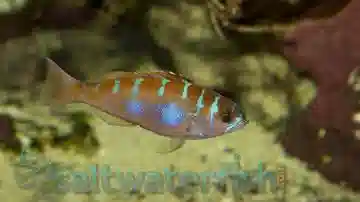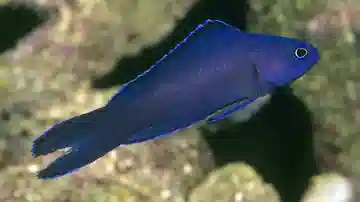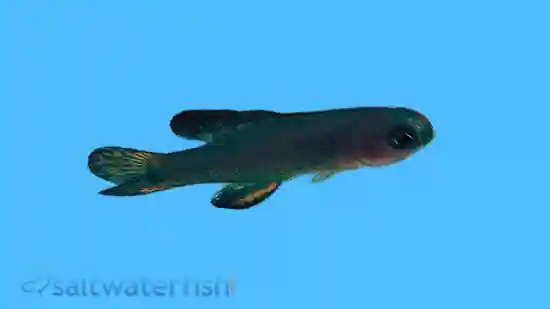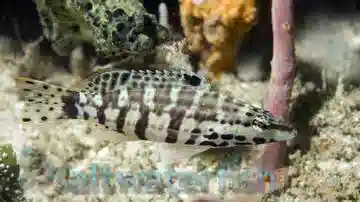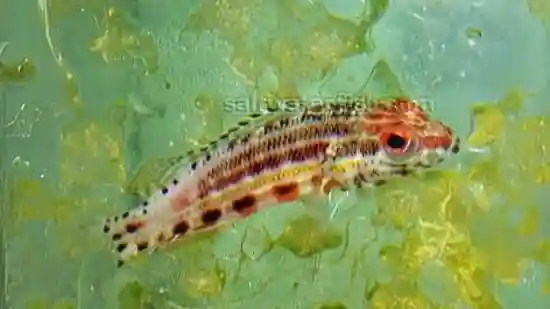Lantern Basslet
Serranus baldwini
(1 Reviews)
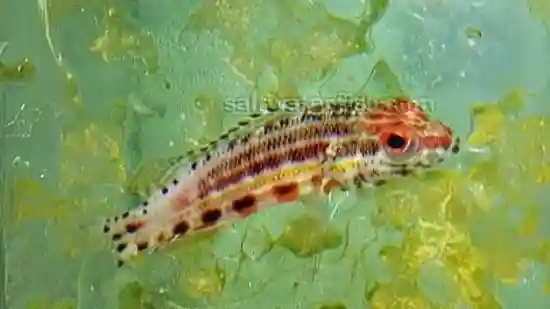
Lantern Basslet
Serranus baldwini
(1 Reviews)
{{ item.name }}
Size: {{ item.extra_field_3 }}
${{ getFormattedPrice(item.saleprice) }} ${{ getFormattedPrice(item.price) }}
To join the waiting list, click here
Free Shipping
With
$199.00
or more in Marine Life.
More details...
Lantern Basslet Care Facts
| Care Level: | Easy |
|---|---|
| Temperament: | Semi-Aggressive |
| Diet: | Carnivore |
| Reef Safe: | No |
| Minimum Tank Size: | 30 gallons |
| Max Size: | 5 inches |
The Lantern Basslet: A Captivating Addition to Your Saltwater Marine Aquarium
The Lantern Basslet (Serranus baldwini), a striking and captivating marine species, is a fantastic addition to any saltwater marine aquarium. This educational and formal product description provides comprehensive insights into the care and maintenance of these fascinating creatures, ensuring that potential hobbyists are well-informed about their requirements and compatibility within their aquarium community.
Habitat of the Lantern Basslet: Originating From the Western Atlantic Ocean
The Lantern Basslet is typically found near coral reefs and rocky outcroppings in the warm waters of the Western Atlantic Ocean. These habitats provide them with plenty of hiding spots and suitable conditions for foraging, making them an ideal candidate for a reef aquarium.
Reef Compatibility for the Lantern Basslet: A Safe Haven in Your Reef Tank
The Lantern Basslet is considered reef-safe. Their peaceful nature and small size make them unlikely to harm corals or other invertebrates. However, it's crucial to note that individual temperament can vary, so careful observation and monitoring are recommended when introducing them to a reef environment.
Size and Lifespan of the Lantern Basslet: Small Wonders with Longevity
Lantern Basslets are relatively small, typically reaching a maximum length of around 3 inches (7.5 cm). In captivity, with proper care, they can live for up to 5-7 years, making them a long-term addition to your marine aquarium.
Diet in Captivity of the Lantern Basset: Culinary Preferences of Lantern Basslet
These fish are carnivorous and should be provided with a diet that includes a variety of small marine organisms. Offer them high-quality frozen or live foods like brine shrimp, mysis shrimp, and finely chopped seafood. Providing a diverse diet will help maintain their health and vibrant coloration.
Aquaculture Availability of the Lantern Basslet: Rarity and Responsible Sourcing
Lantern Basslets are occasionally available through aquaculture efforts but are more commonly sourced from the wild. Availability may vary depending on your location and the stock of your local fish store.
Compatibility of the Lantern Basslet with Other Fish and Invertebrates: Selecting Harmony
Lantern Basslets are generally peaceful and can coexist with various marine species. Here are five compatible tank mates to consider:
- Clownfish (Amphiprion spp.): These iconic reef fish are known for their vibrant colors and often live symbiotically with anemones.
- Royal Gramma (Gramma loreto): Another colorful and peaceful fish, the Royal Gramma, is a great companion for the Lantern Basslet.
- Firefish Goby (Nemateleotris spp.): Firefish gobies are known for their vibrant colors and graceful swimming behavior.
- Cleaner Shrimp (Lysmata amboinensis): These invertebrates are excellent cleaners and make intriguing tank mates for the Lantern Basslet.
- Yellowtail Damsel (Chrysiptera parasema): A small, hardy fish that can add diversity to your aquarium.
These tank mates share similar temperaments and habitat preferences with the Lantern Basslet, creating a harmonious environment in your aquarium.
Sexual Dimorphism of the Lantern Basslet: A Subtle Distinction
Lantern Basslets do not display significant sexual dimorphism, making it challenging to differentiate between males and females solely based on physical characteristics.
Juvenile to Adult Coloration Changes in the Lantern Basslet: Maturing with Style
Juvenile Lantern Basslets exhibit a pale yellowish coloration with a hint of blue, while adults develop a more vibrant and striking yellow and blue combination. These color changes add visual appeal to your aquarium as they mature.
Temperament of the Lantern Basslet: Peaceful and Non-Aggressive
These basslets are known for their peaceful and non-aggressive temperament. They are unlikely to bother other tank mates, making them an excellent choice for community aquariums.
Tank Requirements of the Lantern Basslet: Creating a Suitable Habitat
To ensure the well-being of your Lantern Basslet, it's crucial to provide the following tank requirements:
- Minimum Aquarium Size: A 30-gallon (113 liters) aquarium is suitable for a single Lantern Basslet. For a small group or community setup, consider a larger tank.
- Water Conditions:
- pH: Maintain a pH level between 8.1 and 8.4.
- Salinity: Keep the salinity level at around 1.024 to 1.026.
- Water Temperature: Maintain a stable temperature of 75-80°F (24-27°C).
- Water Flow: Provide moderate water flow to mimic their natural habitat.
Other Common Names: Names for the Lantern Basslet
The Lantern Basslet may also be known by other common names, such as Yellow Lantern Basslet and Baldi Basslet.
Why Choose Lantern Basslet from Saltwaterfish.com: Your Trusted Source for Marine Life
When considering purchasing a Lantern Basslet for your marine aquarium, Saltwaterfish.com is an excellent choice for several reasons:
- High-Quality Stock: Saltwaterfish.com is committed to providing healthy and vibrant marine fish. Their rigorous selection process ensures that you receive top-notch specimens.
- Expert Advice: The team at Saltwaterfish.com is knowledgeable and ready to assist you with any questions or concerns regarding your aquarium setup, maintenance, and fish care.
- Convenient Online Shopping: Saltwaterfish.com offers the convenience of online shopping, allowing you to browse, select, and order your Lantern Basslet from the comfort of your home.
In conclusion, the Lantern Basslet (Serranus baldwini) is an enchanting addition to your saltwater marine aquarium. Its peaceful nature, striking coloration, and compatibility with various tank mates make it an excellent choice for beginners and experienced hobbyists. Ensure proper care, and you'll enjoy the beauty and charm of these fascinating fish for years to come.
I got two of these guys for my 75 and love them. They were eating immediately "thawed brine" and have tons of personality. Not bashful in the least.
Reviewed by: Justin Wandling on April 3, 2014


